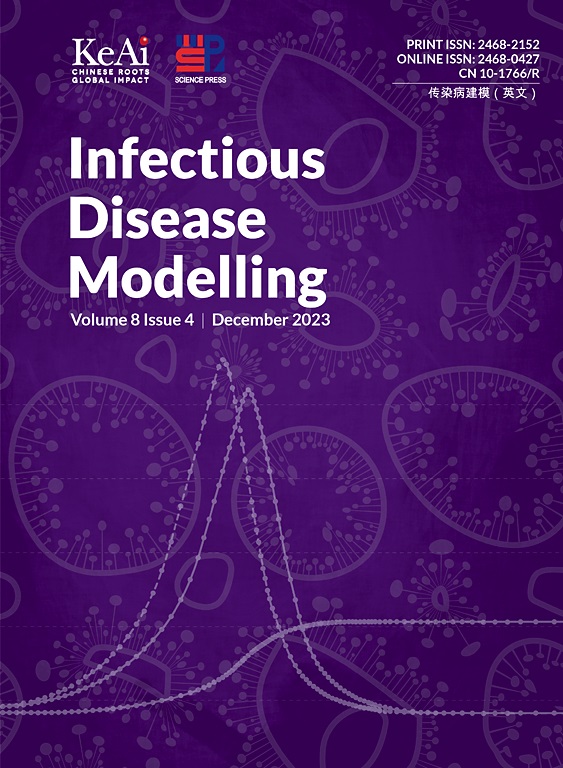Reinforcement learning-based event-driven optimal prevention control strategy for citrus huanglongbing model
IF 2.5
3区 医学
Q1 Medicine
引用次数: 0
Abstract
Citrus Huanglongbing (HLB) is an infectious disease transmitted by Asian citrus psyllids (ACP), which leads to serious economic losses in the citrus industry. Therefore, it is crucial to investigate the prevention and control strategy of citrus HLB. In this paper, the dynamics of HLB propagation between citrus trees and ACP is considered. By applying reinforcement learning (RL) technique, an event-driven optimal prevention control (EDOPC) strategy is developed to ensure the HLB propagation model state converges to a disease-free equilibrium point. Initially, in order to address the challenge of obtaining precise models in practice, a radial basis function-based event-driven observer is built by adopting system input-output data to obtain the approximate HLB propagation model. Subsequently, an EDOPC strategy is devised, which updates only at triggering times to reduce management costs. Additionally, a single critic network structure is constructed to obtain the solution of the Hamilton-Jacobi-Bellman equation, thereby deriving an approximate EDOPC strategy. To align with real-world scenarios, the weights of the observer and the critic network are updated only at event occurrence times. Moreover, by employing the Lyapunov stability principle, the critic network weight error is proved to be uniformly ultimately bounded under the novel event-driven weight adjusting law. Finally, simulation experiments confirm the efficacy of the present RL-based EDOPC strategy.
基于强化学习的柑橘黄龙冰模型事件驱动最优防控策略
柑橘黄龙病(HLB)是一种由亚洲柑橘木虱(ACP)传播的传染病,给柑橘产业造成严重的经济损失。因此,研究柑橘HLB的防治策略至关重要。本文研究了柑橘树与ACP之间HLB的繁殖动态。应用强化学习(RL)技术,提出了一种事件驱动的最优预防控制(EDOPC)策略,使HLB传播模型状态收敛到无病平衡点。首先,为了解决实际中难以获得精确模型的问题,采用系统输入输出数据,构建了基于径向基函数的事件驱动观测器,得到近似的HLB传播模型。随后,设计了EDOPC策略,该策略仅在触发时间更新以降低管理成本。此外,构造了一个单一的临界网络结构,得到Hamilton-Jacobi-Bellman方程的解,从而推导出近似的EDOPC策略。为了与现实世界的场景保持一致,观察者和评论家网络的权重仅在事件发生时更新。此外,利用李雅普诺夫稳定性原理,证明了在新的事件驱动的权值调整律下,批判网络权值误差最终是一致有界的。最后,仿真实验验证了基于rl的EDOPC策略的有效性。
本文章由计算机程序翻译,如有差异,请以英文原文为准。
求助全文
约1分钟内获得全文
求助全文
来源期刊

Infectious Disease Modelling
Mathematics-Applied Mathematics
CiteScore
17.00
自引率
3.40%
发文量
73
审稿时长
17 weeks
期刊介绍:
Infectious Disease Modelling is an open access journal that undergoes peer-review. Its main objective is to facilitate research that combines mathematical modelling, retrieval and analysis of infection disease data, and public health decision support. The journal actively encourages original research that improves this interface, as well as review articles that highlight innovative methodologies relevant to data collection, informatics, and policy making in the field of public health.
 求助内容:
求助内容: 应助结果提醒方式:
应助结果提醒方式:


